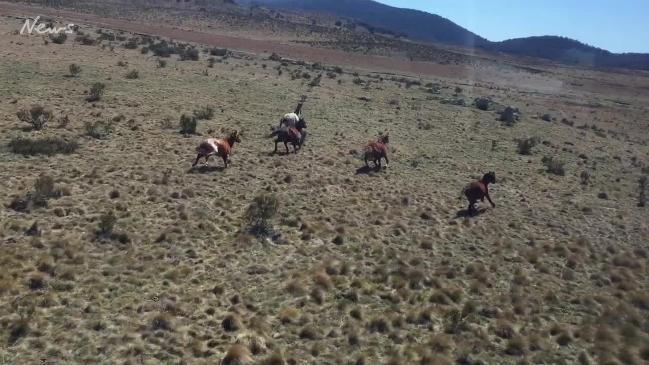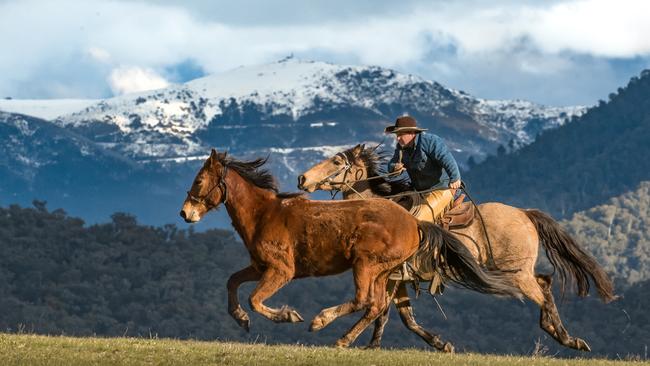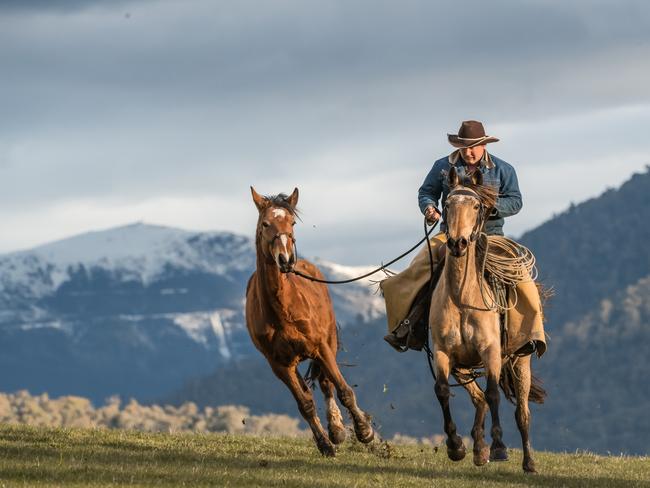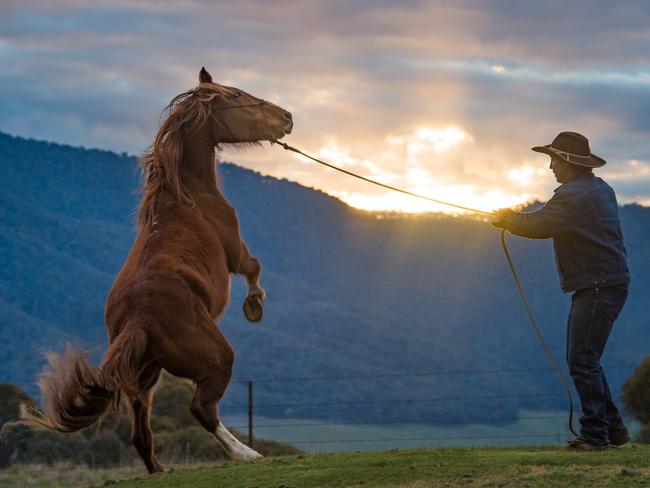Horse lovers fight to save Bogong brumbies
AT NIGHT Clay Baird can usually still spot the last of the brumbies of the Bogong High Plains. Critics claim the horses are causing too much damage, but Mr Baird is among a chorus of campaigners who say the animals should be saved. Here’s why.

VIC News
Don't miss out on the headlines from VIC News. Followed categories will be added to My News.
ON the loneliest of nights, Clay Baird can usually still spot the last of the brumbies of the Bogong High Plains.
They dart across the crooked landscape of this sprawling alpine district, though this tour operator fears not for much longer.
The wild horses in this region have been targeted as part of a state government culling program. The last of the brumbies — now numbered at around 100 — will likely be trapped and removed.
HUNDREDS OF WILD HORSES TO BE EUTHANISED
SNOWY MOUNTAINS BRUMBIES TO BE SAVED BY HERITAGE STATUS
HORSE WHISPERERS FINDING HOMES FOR WILD HORSES
The smartest of the horses will likely be shot and buried in the bush or left to rot.
Critics have claimed the horses are causing too much damage to the environment but Mr Baird is among a chorus of campaigners who say the animals should be saved.
“They share a bloodline dating back to the gold rush of the 1860s,” Mr Baird said. “They are part of the heritage of the region.”

He argued the population of more than 350,000 Sambar deer was responsible for far more damage.
“The brumby population should be controlled,” Mr Baird said. “But rehoming some of the horses would be a better strategy.”
It’s estimated around as many as 2300 wild horses roam the entire alpine district but the culling program has set it sights on specifically reducing the number of horses in the Bogong area.

Mr Baird and his brother Lin have lived and worked here all their lives and offer tourists experiences through Bogong Horseback Adventures.
“Sometimes the horses allow you to come within 50 to 60m,” Mr Baird said.
“They are so swift.
“They disappear and you don’t see them again and then they show up behind you. They are smart and inquisitive.”
Mr Baird is participating in the 150-day Australian Brumby Challenge — where dedicated horse trainers work a wild horse from scratch to raise awareness about the humane management of the animals.


Brumbies used in the competition are passively trapped by national parks staff.
At the end of the challenge the horses are auctioned for charities, which this year includes Dolly’s Dream.
Mr Baird said the Bogong horses were worth protecting.
“The human factors within the park have a far greater impact than any damage these horses could ever do,” Mr Baird said.
Australian Brumby Alliance president Jill Pickering said the issue needed to be reinvestigated.
“We are totally devastated that Parks Victoria continue to insist all the damage reported in Bogong is only from horses when there are masses more numbers of deer.”
She said there was anything between 320 and 430 deer to every one brumby.
“And a stag would grow as big as a horse,” she said.
“They are not focusing on the deer nearly enough.”
But Parks Victoria chief conservation scientist Dr Mark Norman said feral horses and other introduced animals, including deer, were not a natural part of the environment and caused enormous damage.
“The Australian Alps are incredibly rare making up just 0.3 per cent of the area of Australia,” he said. “Their wildlife and habitats are as unique as the Great Barrier Reef and the Amazon Rainforest. Many of the animals and plants that live here occur nowhere else on earth.”
He said a feral horse strategic action plan released in June this year outlined Victoria’s approach to managing feral horses in the Alpine National Park. It found the removal of the horses was necessary to protect natural and cultural values
“Recent surveys in the Bogong High Plains have shown the impacts of feral horses continue to spread into sensitive high country environments, including areas like Mt Nelse where feral horses had not previously been present,” Dr Norman said.
The State Government was actively working with other agencies and deer and hunter associations to increase the control of deer and reduce the damage they caused across national parks, he said.
He refuted claims the horses would be shot and buried, saying all horses would be caught by using passive trap yards. In a statement, Parks Victoria said healthy and rehomeable horses would be transported to rehoming groups as a priority and only animals that couldn’t be rehomed, were ill or injured would be shot “under strict protocols”.


